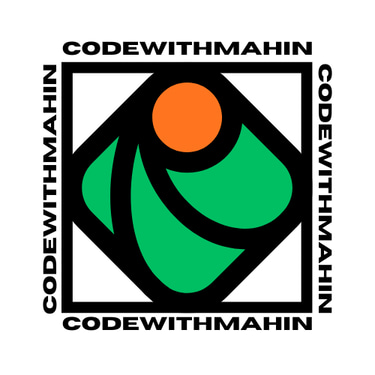Best No-Code Platforms 2025 | Build Apps Without Writing Code
Best No-Code Platforms 2025: Build Apps Without Writing Code
No-code platforms continue to transform how software is created. They allow anyone even those without programming skills to build web and mobile applications through intuitive drag and drop interfaces and visual development tools. In 2025, no-code tools are more powerful, versatile, and accessible than ever, helping startups, small businesses, and individuals rapidly bring ideas to life while saving time and development costs.
This blog covers the best no-code platforms of 2025, their standout features, pricing, and ideal use cases to help you pick the right tool for your project.
What Are No-Code Development Platforms?
No-code development platforms let you design, build, and launch applications without writing a single line of code. Instead of traditional programming, you use visual editors and pre-built components to create workflows, user interfaces, and database interactions. These platforms empower non-technical users to innovate and prototype apps quickly, while also enabling developers to accelerate delivery.
Benefits of Using No-Code Platforms
Speed: Rapid app development and deployment what once took months can now take days or hours.
Lower Cost: Reduce spending on software developers; no-code platforms often have affordable plans.
Accessibility: Anyone can build apps, removing technical barriers.
Flexibility: Supports everything from simple websites to complex custom applications.
Integration: Connect with popular services and APIs to extend functionality.
Scalability: Many platforms now support growing businesses and enterprise needs.
Top 10 No-Code Platforms in 2025 1. Bubble
Bubble allows you to build fully customizable web applications with a visual editor for workflows and responsive design. It supports database management and third-party integrations.
Best for: Custom SaaS, social networks, marketplaces.
Pros: Highly customizable, robust features.
Cons: Learning curve, limited native mobile app support.
Pricing: Free tier available; paid plans start at $25/month.
2. Webflow
Webflow combines visual website design with powerful CMS and e-commerce features. It’s perfect for marketing sites, blogs, and online stores with excellent design flexibility.
Best for: High-end websites, e-commerce.
Pros: Design freedom, powerful CMS.
Cons: Can be complex for beginners; pricier plans.
Pricing: Free with Webflow branding; paid from $12/month.
3. Airtable
Airtable merges spreadsheet ease with database power. Ideal for project management, CRM, and content planning. It supports rich fields and API integrations.
Best for: Project tracking, inventory, CRM.
Pros: Versatile, user-friendly.
Cons: Scaling limits for complex apps.
Pricing: Free tier; paid plans from $10/user/month.
4. Appgyver
Appgyver caters to mobile and web app development with a visual environment, logic flows, and native device access.
Best for: Mobile/web apps, prototypes, enterprise.
Pros: Feature-rich, great for complex logic.
Cons: Steeper learning curve, smaller community.
Pricing: Fully free for small projects; enterprise pricing available.
5. Adalo
Adalo is great for fast mobile app building with drag-and-drop UI and database features. It’s popular for MVPs and internal tools.
Best for: Mobile apps, startup prototypes.
Pros: Intuitive, rapid deployment.
Cons: Limited customization, costlier advanced plans.
Pricing: Free with branding; paid from $50/month.
6. OutSystems
OutSystems targets enterprises with scalable, robust visual development and extensive integrations for business automation.
Best for: Large-scale enterprise apps.
Pros: Scalable, powerful.
Cons: Expensive, complex.
Pricing: Free tier; paid from $4000/month.
Other Notable Platforms
Mendix: Enterprise and IoT app builder.
Glide: Google Sheets-based mobile apps.
Zoho Creator: Business process automation.
Thunkable: Educational and small business mobile apps.
How to Choose the Best No-Code Platform?
When selecting, consider:
Project type & complexity
Budget & pricing structure
Ease of use & learning curve
Platform scalability
Available templates & integrations
Community and support
Common Challenges & Solutions
Platform limitations: Choose one with features that fit your app needs.
Learning curve: Use tutorials and community forums.
Scalability: Start small; migrate if needed.
Customization: Combine no-code with low-code where possible.
With the rise of no-code in 2025, these platforms enable anyone to innovate. Whether building a business website, a mobile app, or complex SaaS product, there’s a no-code tool to fit your needs and skill level.
Get started with one of these top platforms today and bring your ideas to life no coding required!
If you want, I can also help you create blog sections or SEO-optimized content based on this outline. Just let me know!
This blog is based on research by codewithmahin.com and the latest reviews and comparisons of no-code platforms.
